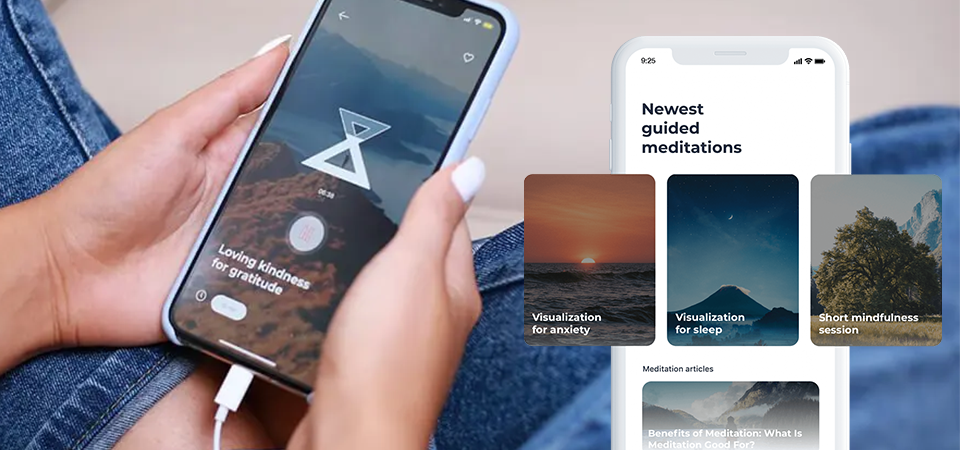Finding the best tools to break bad habits can feel overwhelming when you're stuck in patterns that no longer serve you. I've been there – scrolling through my phone for hours, reaching for unhealthy snacks out of boredom, or procrastinating on important tasks. The good news is that with the right combination of digital tools, apps, and resources, breaking free from these cycles becomes much more manageable than trying to rely on willpower alone.
Over the years, I've tested countless habit-tracking apps, mindfulness tools, and behavior change resources. Some promised the world but delivered little, while others became genuine game-changers in my daily routine. The key isn't finding one perfect solution, but rather building a toolkit that addresses different aspects of habit change – awareness, mindfulness, accountability, and practical support.
Mindfulness and Meditation Apps for Habit Awareness
The foundation of breaking any bad habit starts with awareness. You can't change what you don't notice, and this is where mindfulness becomes invaluable.
Declutter The Mind

This has become my go-to meditation app for developing the self-awareness needed to catch habits before they take hold. What sets Declutter The Mind apart is its practical approach to mindfulness – no mystical language or overwhelming options, just straightforward guided meditation sessions that help you observe your thoughts and impulses without judgment.
The app offers specific meditations for cravings and addictions that I've found particularly helpful when dealing with habitual behaviors. The meditation timer feature also allows for unguided practice once you're comfortable sitting with the discomfort that often accompanies habit change. I appreciate that it doesn't try to be everything to everyone – it simply provides quality meditation content that supports genuine behavioral change.
Simple Habit Tracker Apps
While meditation builds awareness, habit tracking provides the data you need to understand your patterns. I've found that simple, visual trackers work better than complex systems that require extensive logging.
Streaks for iOS and Loop Habit Tracker for Android both offer clean interfaces that make it easy to mark when you've successfully avoided a bad habit or completed a replacement behavior. The visual feedback of seeing your streak grow can be surprisingly motivating, especially during those first crucial weeks when new patterns are still fragile.
Environmental Design and Digital Wellness Tools
Sometimes the best tool for breaking a bad habit is removing the opportunity for it to occur in the first place. This is where environmental design becomes crucial.
Website and App Blockers
For digital habits like excessive social media use or mindless browsing, I've found Freedom to be incredibly effective. It allows you to block distracting websites and apps across all your devices simultaneously. The key is setting up "blocklists" during your most vulnerable times – for me, that's first thing in the morning and late at night.
Cold Turkey is another robust option that's particularly good if you need something more hardcore. It can be nearly impossible to bypass once activated, which is exactly what you want when your willpower is low.
Phone Management Tools
Your smartphone is probably involved in several of your bad habits, so managing your relationship with it is crucial. I use the built-in Screen Time (iOS) or Digital Wellbeing (Android) to set app limits and create phone-free periods.
The "Do Not Disturb" scheduling feature has been transformative for my night time routine. By automatically silencing notifications after 9 PM, I've eliminated the habit of checking my phone right before bed – a behavior that was seriously impacting my sleep quality.
Behavioral Psychology and Support Systems
Breaking habits isn't just about individual willpower – it's about understanding the psychology behind why we do what we do and creating systems that support change.
Habit Stacking Tools and Resources
The concept of habit stacking – attaching a new behavior to an existing routine – has been one of the most effective strategies in my toolkit. While you don't need an app for this, having a system to plan and track these connections helps.
I use a simple notes app to map out my habit stacks. For example: "After I brush my teeth in the morning, I will do five minutes of 4-7-8 breathing before checking my phone." This creates a natural buffer between waking up and diving into digital stimulation.
Community and Accountability Platforms
Social support can make or break your habit change efforts. Reddit communities like r/getmotivated and r/decidingtobebetter provide encouragement and practical advice from people facing similar challenges.
For more structured accountability, Habitica gamifies the habit-change process by turning your goals into a role-playing game. You earn rewards for good behaviors and lose health points for bad ones. While it might seem silly, the gamification aspect can provide just enough external motivation to carry you through difficult moments.
Stress Management and Emotional Regulation Tools
Most bad habits serve as coping mechanisms for stress, boredom, or difficult emotions. Without addressing these underlying triggers, you're likely to replace one bad habit with another.
Breathing and Relaxation Apps
When I feel the urge to engage in a habitual behavior, having quick access to stress-relief tools makes all the difference. The box breathing visualizer and other breathing tools on Declutter The Mind provide immediate relief when cravings hit.
Breathe is another excellent option that sends gentle reminders throughout the day to pause and take conscious breaths. These micro-moments of mindfulness can interrupt the automatic nature of habitual behaviors.
Journaling and Reflection Tools
Understanding the emotional landscape around your habits is crucial for lasting change. I've found that simple journaling apps like Day One or even the built-in notes app can be powerful for this purpose.
The key is asking the right questions: What was I feeling right before I engaged in this habit? What need was I trying to meet? What else could I do to meet that need? This kind of self-awareness work takes time, but it's often the missing piece in failed habit-change attempts.
Creating Your Personal Habit-Breaking Toolkit
The most effective approach combines several of these tools rather than relying on any single solution. Here's how I recommend building your personal toolkit:
Start with Awareness
Begin with a meditation app like Declutter The Mind to develop the mindfulness needed to catch habits in action. Spend at least a week simply observing when and why your unwanted behaviors occur without trying to change them.
Address the Environment
Remove or modify environmental triggers wherever possible. This might mean using app blockers, removing tempting foods from your kitchen, or changing your routes to avoid certain locations.
Build Support Systems
Identify at least one form of accountability, whether it's a habit-tracking app, an online community, or a friend who shares similar goals. The key is having someone or something to check in with regularly.
Develop Healthy Alternatives
For every bad habit you're trying to break, have a specific, healthy alternative ready. If you typically reach for your phone when bored, maybe you'll do triangle breathing instead. The replacement behavior should be easier than the unwanted habit and still meet the underlying need.
Remember that breaking bad habits is rarely about having perfect self-control. It's about creating conditions where making better choices becomes easier and more automatic. The best tools to break bad habits are the ones you'll actually use consistently, so start small and build your toolkit gradually. Focus on progress, not perfection, and celebrate the small wins along the way. With the right combination of awareness, environmental design, and support systems, even the most stubborn habits can be changed.







